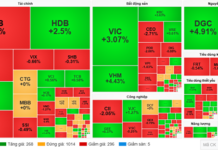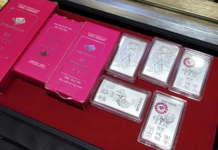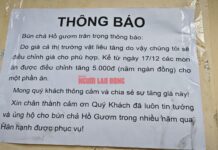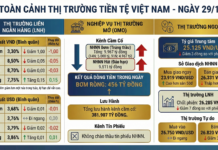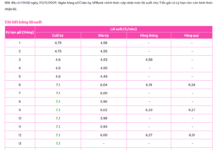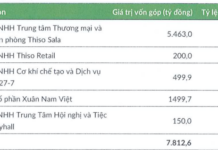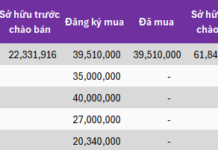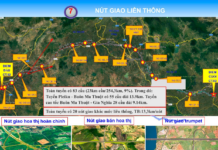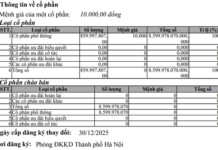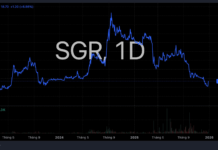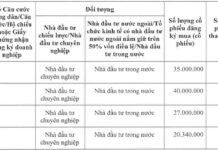
According to preliminary statistics from the General Department of Customs, Vietnam’s exports of ores and minerals in December 2023 reached 114,373 tons with a value of over $21 million, down 61.7% in volume but up 117.6% in value compared to November 2023. Overall, in 12 months of 2023, Vietnam’s exports of ores and other minerals reached over 2.8 million tons with a value of over $187.7 million, down 16.6% in volume and 11% in value compared to the same period of 2022.
The average export price reached nearly $67/ton, up 6.7% compared to the same period last year.
In terms of markets, Taiwan (China), South Korea, and China are the three largest importers of ores and minerals from Vietnam. Specifically, in 2023, exports of this category of goods to Taiwan (China) earned $17.6 million with over 820 thousand tons, up 31.5% in volume but down 2.2% in value compared to the same period.
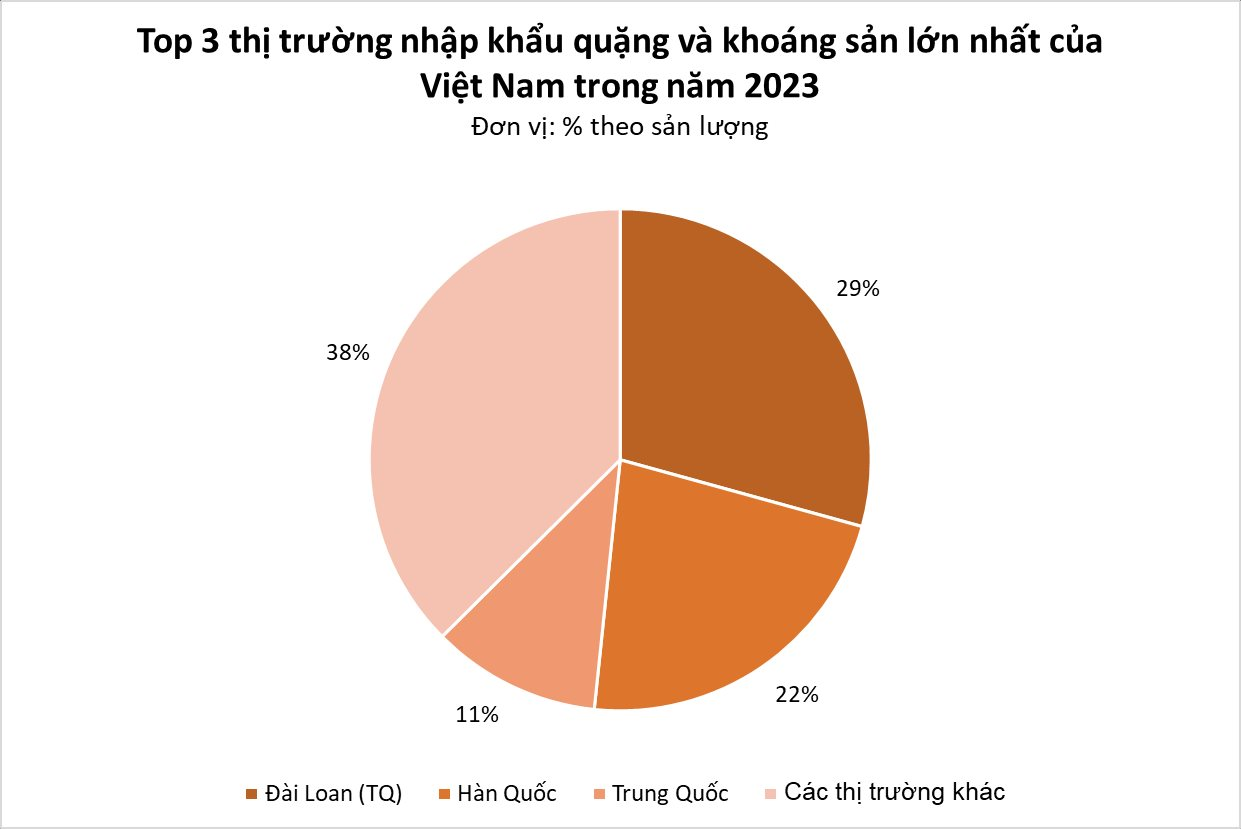
Also in 2023, exports of this category of goods to South Korea reached 626,676 tons with a value of over $7.67 million, up 37.4% in volume and 42.5% in value compared to the same period of 2022.
Regarding China, in 12 months, Vietnam exported 305,757 tons with a value of over $69 million to this market, down 25.2% in volume but up 6% in value compared to the same period of 2022.
Interestingly, a Southeast Asian market is witnessing a sharp increase in imports of this category of goods from Vietnam, which is Thailand. In December 2023, exports of ores and minerals to Thailand reached 396 tons with a value of over $75.1 thousand, up 780% in volume and 34% in value compared to December 2022.
Overall, in 12 months, exports of this category of goods to Thailand earned over $646 thousand with 2,068 tons, up 341% in volume and 16% in value compared to the same period of 2022.
The average export price to the Thai market reached $313/ton, a steep drop of 74% compared to the same period of 2022. This may be one of the reasons why Thailand has increased imports.
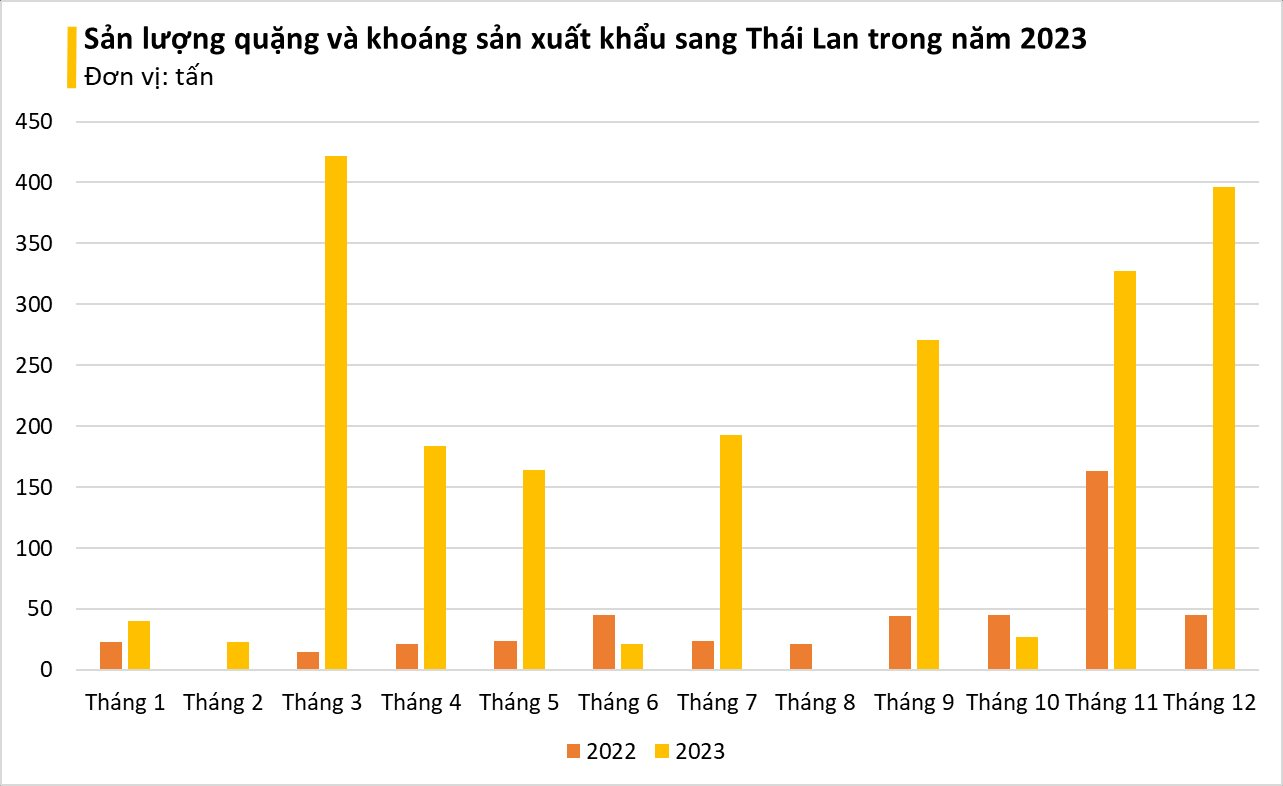
Vietnam is a resource-rich country, especially in natural resources such as forests, rare animals and plants, mineral deposits, water, oil, and gas.
Vietnam’s mining industry started to develop in the late 19th century, initiated by the French. Since 1955, Vietnam has taken over, maintained, and developed mining and mineral processing facilities. Up to now, the country has more than 5,000 mining points and deposits.
Vietnam ranks 15th in the world in terms of mineral area and 65th in terms of geological age, with 60/200 common types of minerals in the world. In particular, some types of minerals have significant reserves, are world-scale, and are strategically important resources for socio-economic development.
For example, bauxite (5.8 million tons) ranks 2nd in the world, fluorite (5 thousand tons) ranks 5th in the world, apatite (778,000 tons), titanium (15.71 million tons), coal (3,520 million tons), rare earths (22 million tons) ranks 2nd in the world, and granite (15 billion m3), tungsten (100 thousand tons) ranks 3rd in the world…
Currently, mineral resources have become scarce and are being intensely disputed in many places, especially non-renewable resource sources.


